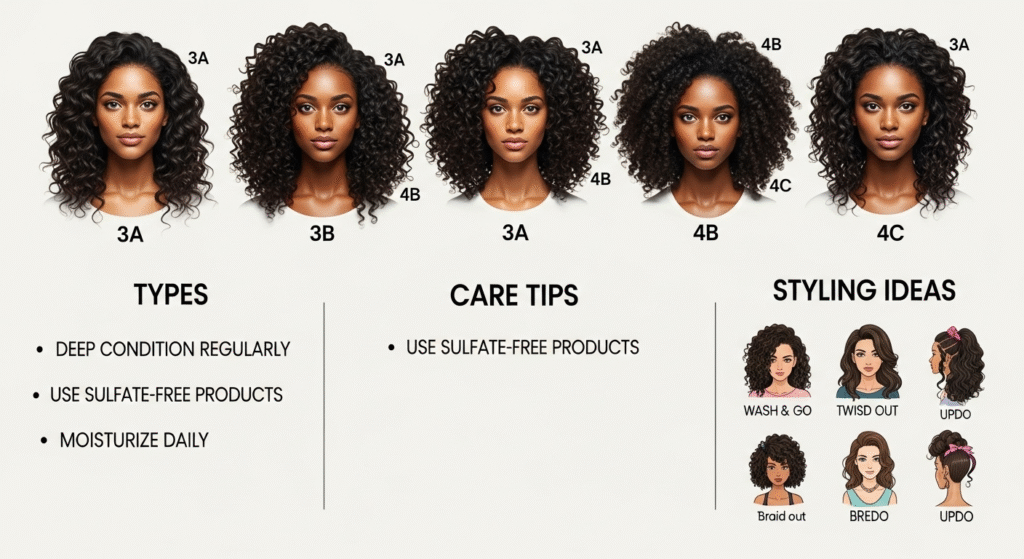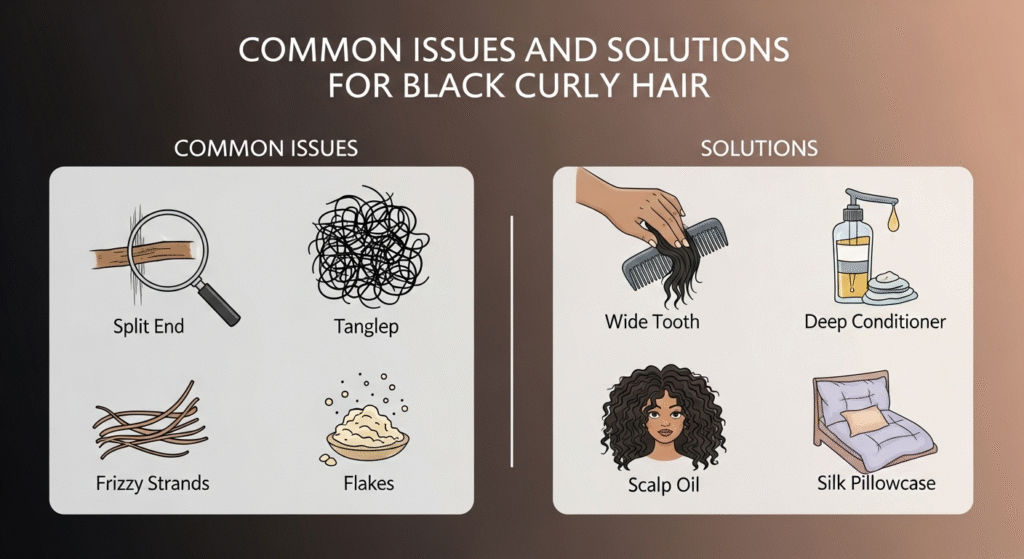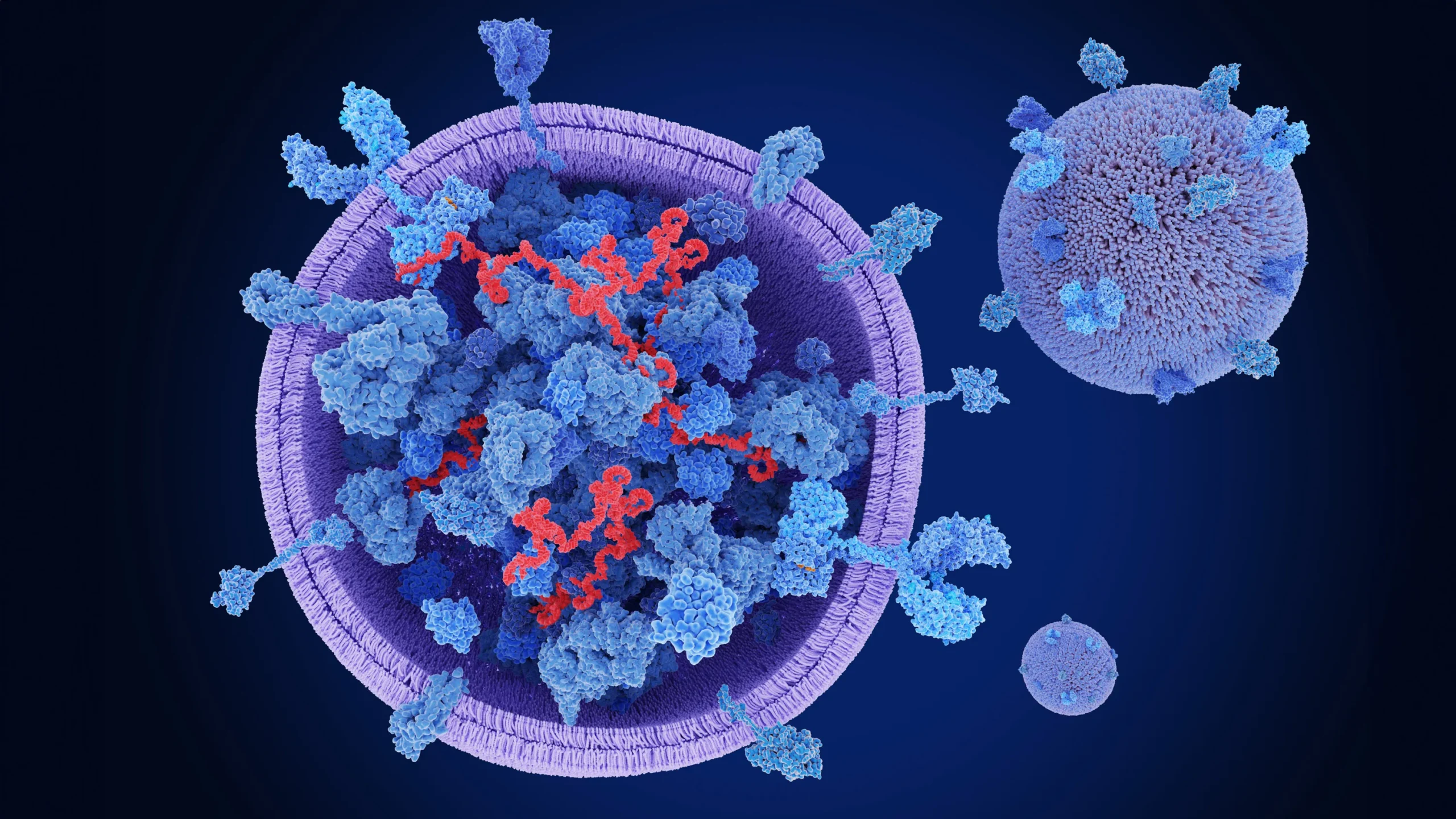If you have black curly hair, you know that it requires special care to keep it healthy and beautiful. Curly hair textures can vary significantly from person to person, and understanding the different types of curls is the first step to mastering your hair care routine. In this article, we will dive into the different …
If you have black curly hair, you know that it requires special care to keep it healthy and beautiful. Curly hair textures can vary significantly from person to person, and understanding the different types of curls is the first step to mastering your hair care routine.
In this article, we will dive into the different black curly hair textures, provide expert advice on how to care for them, and suggest styling tips to embrace your natural curls. Whether you are just learning about curly hair or looking for new ways to manage your curls, this guide has something for you.

What Are Black Curly Hair Textures?
Black curly hair textures are incredibly diverse, with each type of curl having its unique characteristics. Understanding the science behind curly hair and the differences in texture can help you better care for your hair.
The Science Behind Curly Hair
Curly hair differs from straight hair in the way the hair follicle grows. Straight hair follicles are round, whereas curly hair follicles are more oval or asymmetrical. This shape affects how hair grows out of the scalp, causing it to bend and curl.
Disulfide bonds play a major role in the texture of curly hair. These bonds are stronger in curly hair than in straight hair, leading to more pronounced curls. The amount of keratin in your hair also influences the texture and strength of your curls.
Types of Black Curly Hair Textures
Curly hair is typically categorized into different types based on the curl pattern and thickness. The most common categories are:
- Type 3 Curly Hair: This includes hair that forms well-defined curls, ranging from loose waves to tighter spirals. Type 3 curls tend to have more volume and are often thick in density.
- Type 4 Kinky Hair: Also known as coily or kinky hair, this type is characterized by tight, dense curls that can shrink significantly. The curls are usually tightly coiled, sometimes forming a zig-zag or spiral shape.
Key Differences Between Hair Types
- Type 3 curls are more defined and have more flexibility when styling, while Type 4 curls are tighter and may need extra care to maintain their shape.
- Type 3 hair tends to be thicker in density, while Type 4 hair can be finer but denser.
Caring for Black Curly Hair Textures
Black curly hair can be delicate and more prone to breakage compared to straight hair. Understanding the specific needs of curly hair textures is essential to maintain its health and natural beauty.
Moisture is Key
Curly hair often loses moisture faster than straight hair, so it’s essential to keep it hydrated. Deep conditioning treatments help replenish moisture and prevent dryness, which can lead to breakage.
- Best Moisturizing Ingredients: Look for products that contain shea butter, coconut oil, or argan oil. These ingredients penetrate the hair shaft to provide deep hydration and nourishment.
- Leave-In Conditioners: Leave-in conditioners help lock in moisture without weighing down the curls. These are especially beneficial for curl definition and frizz control.
Shampooing and Conditioning Techniques
While curly hair needs moisture, it should also be gently cleaned to avoid stripping away natural oils.
- Sulfate-Free Shampoo: Sulfates can dry out curly hair and strip it of its natural oils, which can lead to frizz and breakage. Opt for a sulfate-free shampoo designed for curly hair.
- Conditioning: Use a rich conditioner that provides nourishment and hydration. Consider a co-wash (conditioner-only wash) once or twice a week to cleanse your hair without removing moisture.
Detangling and Comb Methods
Curly hair can tangle easily, but the right tools and techniques can help minimize breakage.
- Wide-Tooth Comb: Always use a wide-tooth comb or your fingers to detangle curly hair when it’s wet to prevent breakage.
- Start from the Ends: Begin detangling at the tips and work your way up to the roots to minimize stress on the hair shaft.
Avoiding Common Mistakes
- Limit Heat Styling: Excessive use of heat can damage curly hair and alter its natural pattern. If heat styling is necessary, use a heat protectant spray.
- Chemical Treatments: Avoid chemical treatments like relaxers or perms, as these can weaken your hair and make it more prone to damage.
Common Issues and Solutions for Black Curly Hair

Curly hair often faces specific challenges like frizz, dryness, and breakage. Here’s how to address some common problems:
Frizz Management
Frizz is one of the most common issues for people with curly hair, but it can be controlled.
- Anti-Frizz Products: Use anti-frizz serums or creams that smooth the hair cuticle and lock in moisture.
- Microfiber Towels: Instead of using a regular towel, use a microfiber towel to gently blot your hair after washing to reduce frizz.
Breakage and Hair Loss
Breakage is often caused by dryness, rough handling, or excessive heat styling. Here’s how to prevent it:
- Protein Treatments: Incorporate protein-rich treatments to strengthen hair strands and reduce breakage.
- Protective Styles: Braids, twists, and bantu knots protect your hair from physical stress and prevent breakage.
Dryness and Scalping Issues
Dry scalp can lead to dandruff and itching, which affects the overall health of your curls.
- Oils for Scalp Hydration: Massage natural oils such as tea tree oil, jojoba oil, or castor oil into your scalp to hydrate and promote a healthy environment for hair growth.
Styling Black Curly Hair Textures

Styling curly hair can be fun, but it requires the right products and techniques to maintain its shape and health.
Defining Curls with the Right Products
To achieve well-defined curls, you’ll need products that offer curl definition without causing crunchiness.
- Curl Creams and Gels: Products that provide hold while enhancing your natural curl pattern.
- The Finger-Coiling Method: This technique involves twisting small sections of hair around your finger to define curls more precisely.
Protective Styles for Curly Hair
Protective hairstyles help reduce damage and breakage while allowing your hair to grow.
- Braids and Twists: Styles like box braids, Senegalese twists, and Bantu knots protect your hair and give it a break from constant styling.
- Satin Scarves or Pillowcases: To prevent breakage while sleeping, wrap your curls in a satin scarf or use a satin pillowcase to reduce friction.
Experimenting with Different Curly Hairstyles
Embrace the versatility of curly hair with various styles, such as:
- Afro Curls: Natural and voluminous, perfect for showcasing your curls.
- Curly Buns: A practical yet chic style for any occasion.
- Side-Parted Curls: A sleek look that works well for both casual and formal settings.
Expert Opinions on Black Curly Hair Care
Real-Life Case Studies
Many individuals have successfully embraced their curly hair texture by switching to a more hydration-focused regimen. For instance, Sarah, a client who struggled with dry, frizzy hair, saw a noticeable improvement in her curl definition and texture after introducing weekly deep conditioning masks and using moisturizing products like argan oil.
FAQs
How do I know which type of curly hair texture I have?
Hair texture is determined by the curl pattern. Type 3 includes looser curls, while Type 4 has tighter, kinkier curls. Identifying your curl pattern will help in choosing the right care routine.
How often should I trim black curly hair?
Regular trims are important to keep your curls healthy and prevent split ends. Aim for a trim every 8-12 weeks, depending on your hair’s growth rate.
What’s the best way to define my curls?
Use a curl cream or gel that suits your hair type and apply it while your hair is damp. For extra definition, try finger-coiling each curl or using a diffuser when blow-drying.
Can I straighten my curly hair without damaging it?
Straightening curly hair occasionally is fine, but always use a heat protectant to minimize damage. Limit heat styling to preserve your natural curl pattern.
How do I prevent hair breakage and keep my curls healthy?
Keep your curls hydrated, use protective styles, and avoid over-styling. Regular protein treatments and deep conditioning are also key to keeping your curls strong and healthy.
Conclusion: Embracing Your Black Curly Hair Texture
Black curly hair is uniquely beautiful, and with the right care and attention, you can enhance your natural curls. Understanding your specific hair type, using the right products, and embracing protective styles will help you achieve healthy, defined curls. Don’t be afraid to experiment with different styles and techniques to find what works best for your hair. Remember, healthy hair starts with proper care.
Ready to Take Your Next Step:
Want to learn more about caring for your curly hair? Book a consultation with Dr. Uzma Irfan, an ISHRS-certified surgeon, to get personalized tips and product recommendations for your curly hair texture.






